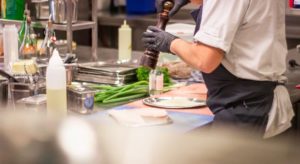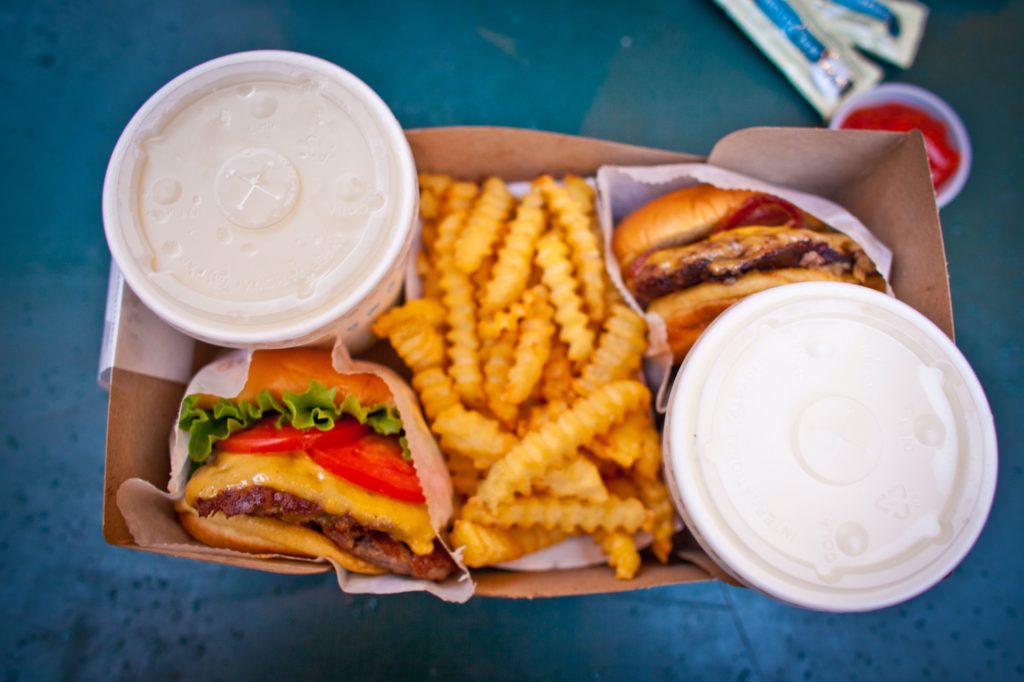 The trickle-down effect that COVID-19 has had on restaurants has been astronomical. From to-go programs becoming the new front line of restaurants causing disposables to go through roof; to sustainability desires; inventory needs, and more; the world of paper and packaging is at the top of every operator’s radar. And if it’s not, you’re missing the mark. We know that restaurant delivery and to-go isn’t going to die down any time soon, and we know that the need for sterile gloves and items of the like are here to stay. So in a world where everyone has the same ultimate game plan, how can you stay a step ahead of the game and make sure you’re playing your cards right?
The trickle-down effect that COVID-19 has had on restaurants has been astronomical. From to-go programs becoming the new front line of restaurants causing disposables to go through roof; to sustainability desires; inventory needs, and more; the world of paper and packaging is at the top of every operator’s radar. And if it’s not, you’re missing the mark. We know that restaurant delivery and to-go isn’t going to die down any time soon, and we know that the need for sterile gloves and items of the like are here to stay. So in a world where everyone has the same ultimate game plan, how can you stay a step ahead of the game and make sure you’re playing your cards right?
RASI New Business Development Strategist, Dave Downs, sits down with Director of Partnerships, Max Strycker; Purchasing Analyst, Catherine Reeves; and Drew Frank, Sales Manager at Western Paper, to discuss the current landscape and the future outlook on the world of restaurant purchasing in the eyes of an operator.
HOW DO YOU KNOW IF YOU’RE ORDERING THE CORRECT PACKAGING PRODUCT FOR YOUR RESTAURANT CONCEPT?
1) Before you should even consider the type(s) of packaging you want to utilize for your products, it’s imperative to think about the type of food that you’re serving and ask yourself these questions:
- Does my food travel well?
- Is my food going to make it to its final destination with integrity?
- Do I need to pare down my menu specifically for my to-go program?
“You could have the best to go containers in the world, but eggs are still going to get cold 2 seconds after you plate them.”
– Drew Frank, Sales Manager, Western Paper
2) Once you’ve determined your food items that will travel well, you need to think about temperature and the substrate that your product is going in. Hot items need to stay hot, and cold items need to stay cold; you don’t want, for example, a cold salad to wilt because you’re adding a hot protein to it.
- There are specific plastics and fibers and different substrates that make for a good food packaging experience of the product that’s going in it. So, if an item is designed to stay hot but needs to be crisp, there’s a specific type of package for that item; or, if something needs to stay hot that’s a liquid, there’s a very different type of packaging involved.
3) Next, you need to think about how the guest will experience your product once they sit down and eat it.
- Do you want your customer to be able to eat out of the packing because the food will be hot and ready to go?
- Do you expect the customer to reheat the food and therefore the packaging needs to be microwavable?
4) Finally, you should be thinking about your product’s aesthetic. Does your food look like it’s worth what your customer paid for it? Does it look like a $15 burger, or does it look like a $5 burger based on the condition it arrives in? It’s critical to maintain your brand integrity and project the same experience that you would want your customers to have within your four walls if they were to be dining in.

WHAT HAS CHANGED WITH RESTAURANT PACKAGING IN TERMS OF SUSTAINABILITY?
From a sustainability standpoint, no one’s ever said, “that food was terrible, but it was in a compostable package so I’m going to order it again.” However, you can always have the correct substrate and figure out how to blend it into your environmentally sustainable program.
So even if it’s in polypropylene, which is still a #5 in the Recycle Wheel and that can be recycled depending on your municipality. There are ways, especially if it’s in the fabric of your business, to incorporate the sustainability aspect into your restaurants to-go program.
One thing to keep in mind is that right now with so many to-go dining options, from fine dining to fast-casual, is that one negative experience can throw your customer at another restaurant down the street simply because to-go is so abundant.
So, it’s crucial that you’re not risking a negative experience in favor of a sustainable platform if that platform doesn’t make sense for your restaurant.
HOW OFTEN SHOULD YOU BE REEVALUATING YOUR TO-GO PROGRAM?
Anytime you undergo a menu change you’ll want to reevaluate your packing and to-go program; especially if you’re putting a seasonal item in the program or if you’re going to expand your offering into family meals or parbaked items.
Different to-go concepts will grow your brand and therefore your strategy will need to grow with it.
You should always be looking at how to leverage different items across the entire menu group as opposed to one specific item, and also looking at how to balance the cost of the items – do you have the ability to save on things that are costing you money while spending on the things that are going to make you money?
HOW CAN YOU TAKE CONTROL OF YOUR INVENTORY & ORDERING FOR DISPOSABLES WHEN THE DEMAND IS SO HIGH?
1) Make sure that you’ve got the right package that meets as much of your food as possible. If you have the ability to consolidate the items that you’re buying, you can do a few things:
- You can drive the right costing because the volume goes up
- You can reduce the amount of SKUs that you need to store
2) The supply chain is really tight right now, so inventory is going to continue to be a challenge, so you have to work with your distribution partner to make sure you’re communicating with each other about what’s in stock and how much, so if you need to store extra while the dining rooms closed, you can. Keep in mind that you can’t sell product without packaging, so your relationships with your distributors are crucial.
“As smart business owners you have to think: Ok we have Plan A for our to-go product that we’re using. We’re going to have some inventory for Plan A and we’re going to work with our key suppliers to make sure that we do, but if we need to move to Plan B, is that still going to continue to drive a good experience give us the ability to stay in business.”
– Drew Frank, Sales Manager, Western Paper
WATCH THE FULL VIDEO BELOW TO SEE WHAT THE FUTURE LOOKS LIKE FOR THE SUPPLY CHAIN OF SANITARY GLOVES:
Is there any sanitary glove material that’s more cost-effective?
It depends on how the glove is being used. You obviously want to wear the right glove that’s going to be cost-effective and still meet the needs of the user, so you want to break it down by who you have on the team wearing gloves and what they’re specifically doing.
For example, if you’re a yogurt shop that now has to, instead of the customer filling their own bowl, fill the yogurt for them and you’re going to wear gloves and change them out after each order, the least expensive option is a cast poly glove.
That’s the glove that is going to be most cost-effective, readily available, and the case packs are giant; and then you can scale from there.
However, if you’ve got a chef in the back who needs to cut meat, then maybe you need to spend a little more on at least a vinyl nitrile blend if you’re not continuing to buy that nitrile glove if it isn’t available due to supply and demand issues.
How Can You Mitigate Wasting Restaurant Disposables?
It’s important to break this out into two parts: 1) How do I reduce waste in the building as it relates to cost? How do I make sure I don’t have money tied up in products on my floor that are unused? And 2) How do I mitigate any waste in the packaging that I’m using for the food as it heads out the door?
- Tighten up your purchasing and make sure you have a designated team member that’s in charge of the ordering
- Paring down the items that you’re using
- Making sure that you’re not buying random items
- Working closely with your supplier to make sure that they know what you need when you need it and on the flip side, understanding supply chain challenges from your supplier so you know what you might need to stock up on, and when
- Knowing what you can buy in a just-in-time delivery fashion so that you don’t have dollars tied up in inventory on your floor
- Ask questions to your customers – Do you want this item (i.e. plasticware etc.)? Many people eating at home will already use their own silverware
What Are The Top Marketing Techniques To Utilize With Packing When Creating Your To-Go Programs?
Getting creative with your branding will set you apart from everyone else who has standard to-go packaged items. Here are some of the top strategies Drew has seen to date:
- Providing family-style parbaked meals with heating and serving instructions
- Some extra-creative operators have even sent videos of their chefs walking people through each step!
- Giving some brand identity and a brand story: Every package that goes out the door needs to tell somebody something they didn’t know about your restaurant
- Giving back to front-line workers
- Telling customers about where you source your food
- Adding compostable items and telling the story behind “why”
- Providing more information on your restaurant – social media, website, etc.
- Custom stickers and imprinted bags, boxes, and napkins








